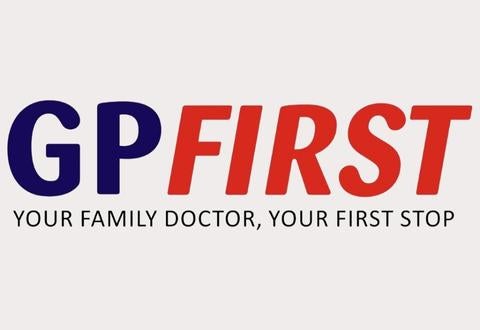Changi General Hospital will NEVER ask you to transfer money over a call. If in doubt, call the 24/7 ScamShield helpline at 1799, or visit the ScamShield website at www.scamshield.gov.sg.
Caring for your body
- Issue 3
- Making sense of musculoskeletal conditions
- Caring for your body
- Making no bones about it
- Journeying with patients through the times
- Celebrating mothers (and daughters) in healthcare
- Pin-pointing remedies
- Inspiring nurses to innovate
- What's up, Bot?
- A wellness ecosystem for the young
- Bettering your bladder and bowel care
- Cheers to kindness and patience
- Breathtaking facts about asthma
A look at some common bone, joint and musculoskeletal conditions.
We have over 200 bones in our body, and our bones are constantly growing and regenerating. There are instances that can cause damage to our bones and joints — and that is where the CGH Department of Orthopaedic Surgery comes in. The team sees a large variety of bone, joint and musculoskeletal conditions. We look at some conditions and related issues seen by the team.

OSTEOPOROSIS

Common in countries that have a large ageing population, osteoporosis can easily lead to fractures due to falls or home accidents. Imagine an increase in spaces and cavities in the bones — that is the result of osteoporosis, where bones weaken, become brittle and lose their density. The resulting fractures are a major cause of disability among Singaporean seniors. CGH’s orthopaedic trauma surgeons work with clinicians from other disciplines such as geriatric and rehabilitation medicine to address these fractures and complications.
Also known as a “silent disease”, osteoporosis could be caused by family history, insufficient calcium and Vitamin D, smoking or excessive alcohol consumption. As a chronic disease, life-long medication can help prevent continued bone loss and reduce risks of fractures.
ARTHRITIS
Joint inflammation, stiffness, swelling and redness — these are some of the common symptoms of arthritis. As the condition worsens, the joints can become deformed. Non-surgical options are available to patients, including medications that can relieve pain and inflammation, lifestyle changes in reducing high-impact activities, weight-loss programmes and therapy.
If required, CGH’s orthopaedic surgeons are able to carry out joint replacement and limb alignment surgeries when patients suffer complex fractures and arthritis. The surgeons are also able to perform joint reconstruction surgery.
WRIST FRACTURES
Wrist fractures often occur as a result of falling on an outstretched hand. They can also occur because of accidents or sports injuries. Patients with a wrist fracture experience pain and tenderness, have bruising and swelling, or have an obvious deformity at the wrist and forearm region. A wrist fracture happens when the larger bone in the forearm breaks, or small bones in the wrist joint are broken.
Patients with wrist fractures are assessed by checking the skin and through X-rays. A cast (plaster) may be placed on the wrist to immobilise the broken fragments while the bone heals. Patients will be regularly reviewed to assess the healing of the fracture and subsequently will undergo rehabilitation once it heals. If the bones in the wrist are largely out of place, surgical treatment might be advised.
SHOULDER PAINS

Shoulder pains are a common musculoskeletal condition, with rotator cuff injuries being a major contributor to shoulder-related complaints.
Patients may experience pain over the shoulder, or the upper arm region. This often starts as a dull minor ache, worsening over time with increasing intensity and frequency, affecting the shoulder’s range of motion. Daily activities such as dressing, grooming and showering may be impacted. Shoulder pain can be worse in the night, especially when lying on the affected shoulder — and may lead to poorer sleep quality.

First-line options include rest, pain and/or anti-inflammatory medications, and physiotherapy. Some patients may benefit from a shoulder joint injection, which uses a mixture of steroid and local anaesthetic medications for pain relief.
Surgical options — usually performed with a key-hole method — will be considered if these options are unable to help. Attachment of a graft can be used to bridge large tears, and insertion of a biological patch can help with tendon regeneration. Open surgery such as shoulder replacement may be necessary for patients with signifcant cartilage wear in addition to the rotator cuff injury. Post-operative physiotherapy is crucial to optimising treatment outcomes.

KNEE INJURIES
An Anterior Cruciate Ligament (ACL) tear is a common contact sports injury involving the young and active population. You may hear a pop or crack sound. Such an injury results in pain, swelling, and instability of the knee. If the ACL tear is not treated, it can lead to further injury of the knee.
Some patients can manage with non-surgical treatment if they remain asymptomatic with physiotherapy and activity modification. However, if one plans to return to an active lifestyle, it is advisable to explore surgery.

The ACL reconstruction surgery is a commonly-performed procedure at CGH. The hamstring muscle is a commonly-used ACL graft (a substitute for the torn ACL) harvested from the same knee. ACL surgical techniques and options have evolved over the years, thanks to extensive global research. This includes the new “all-inside” technique which conserves bone and reduces post-operative pain. This technique potentially uses less hamstring graft and thus helps with the preservation of the hamstring function. As part of the procedure, an arthroscope — a camera similar in diameter to a pen — is inserted into the knee through keyhole-sized incisions to facilitate the surgery.
Helping patients in their post-operative recovery
The patient is able to go home within 24 hours of the ACL reconstruction surgery. A detailed set of post-operative instructions as well as a well-planned physical therapy programme are prescribed. This minimally-invasive surgery facilitates recovery via bone conservation, hamstring preservation and pain reduction.
ANKLE SPRAINS

The ankle joint is one of the most commonly-injured joints in sports activities. Sprains are the most common type of ankle injury that occur during sporting activities, especially those that involve sudden stops and movements such as basketball and football.
An individual with an ankle sprain experiences pain, swelling, a constant feeling of the ankle giving way, or rolling of the ankle (instability). He or she will find it difficult to use the stairs, walk long distances, run, do sports or wear high heels. In severe cases, one can experience instability when walking on flat surfaces and even ground.

Patients at CGH are first treated according to the POLICE protocol, a method of treating musculoskeletal injuries that involves Protection, Optimal Loading, Icing, Compression and Elevation. Physiotherapy sessions might be recommended if appropriate. If necessary, a foot and ankle specialist will follow up with the patient.
About 30% of patients with acute ankle sprains end up with chronic ankle instability, which results in prolonged swelling of the ankle. They often describe their symptoms as “ankle feeling loose” or “ankle giving way”. If the condition persists, they can develop cartilage injury and have reduced range of ankle movement, as well as experience pain in their ankle during daily activities. There is also a possibility of early wear and tear (osteoarthritis) of the ankle. Other ligaments and tendons around the ankle can become injured, swollen and painful if left untreated. Hence, it is recommended that patients seek medical help if they are experiencing chronic ankle pains.
Helping patients with chronic ankle instability
Patients with chronic unstable ankles who are unable to recover from the initial treatments may be offered surgery. The ArthroBrostrom surgery is a minimally-invasive keyhole surgery performed as a day surgery or short stay case. The ligament is repaired using thread-like material. The patient will have two small sub-centimetre cuts to allow the insertion of an arthroscope for the surgery to be performed. Post-surgery, the patient is allowed full weight-bearing (the ability of a body part to resist or support weight) on the same day of surgery. After the procedure, patients can expect to return to sports in two months.

Adjunct Assistant Professor Kinjal Mehta and Senior Staff Nurse Desiree Gueco Soriano treating a wrist fracture with a plaster.
Stay Healthy With
© 2025 SingHealth Group. All Rights Reserved.


















